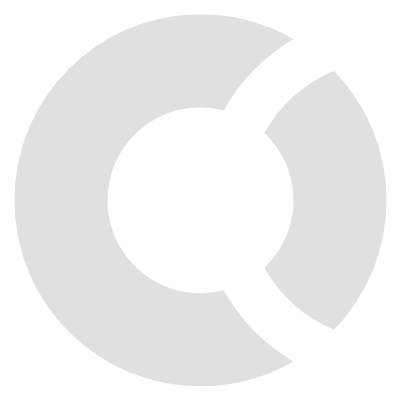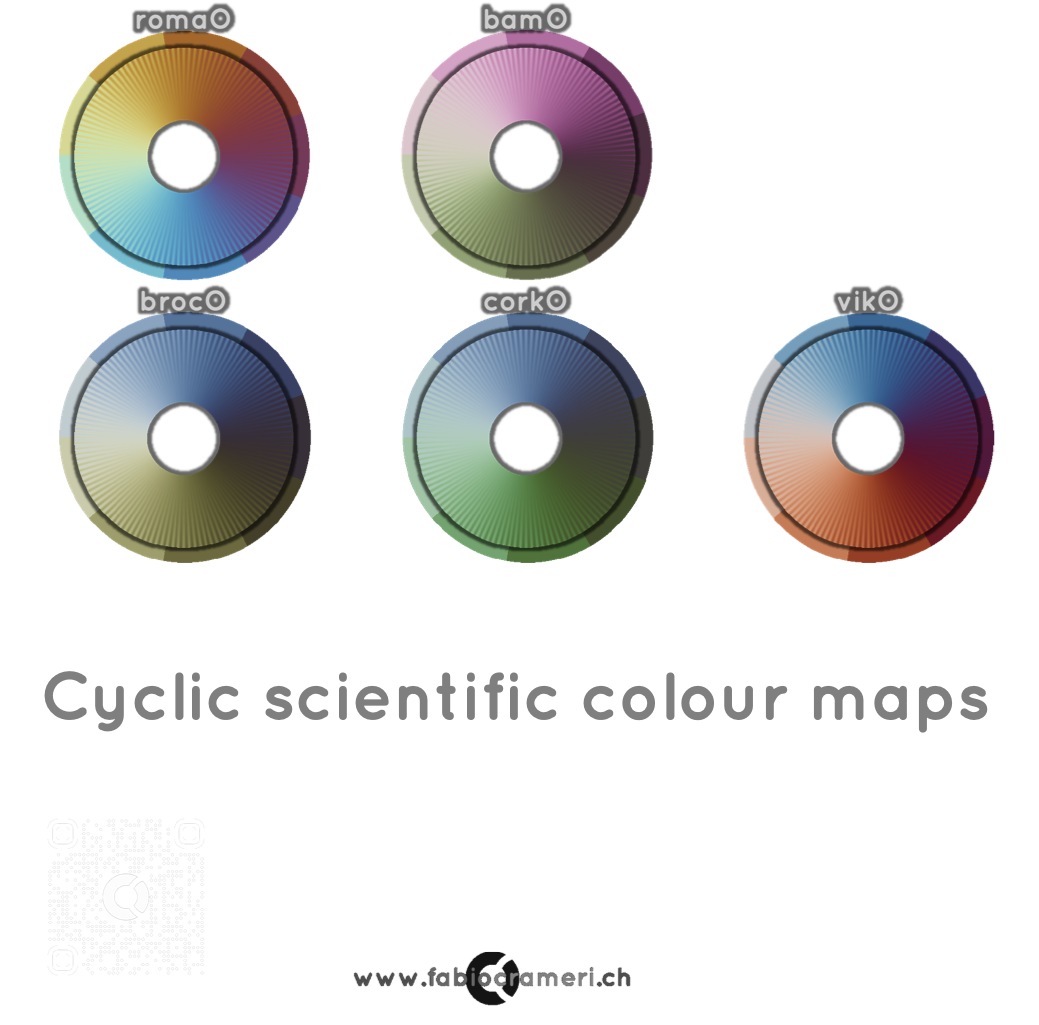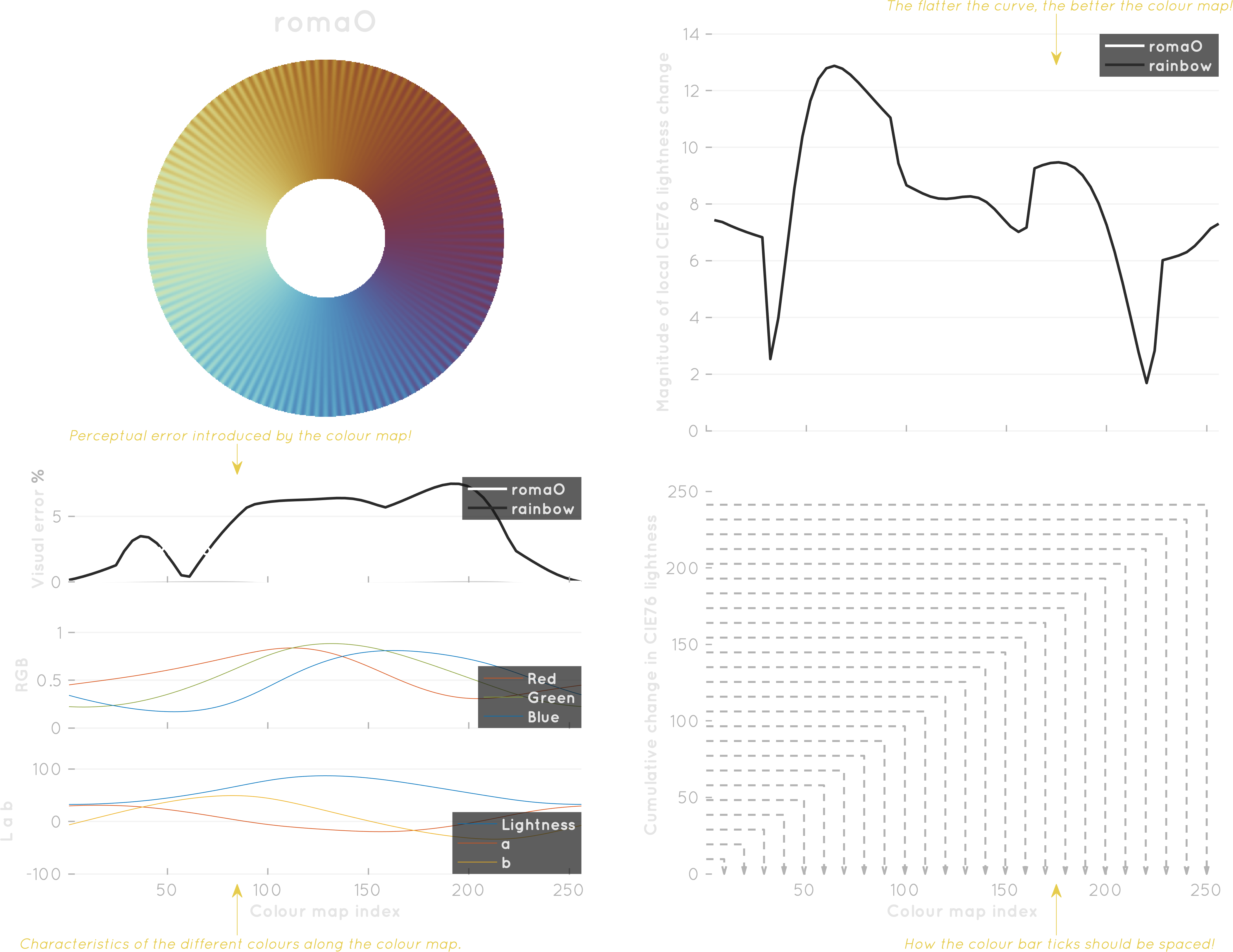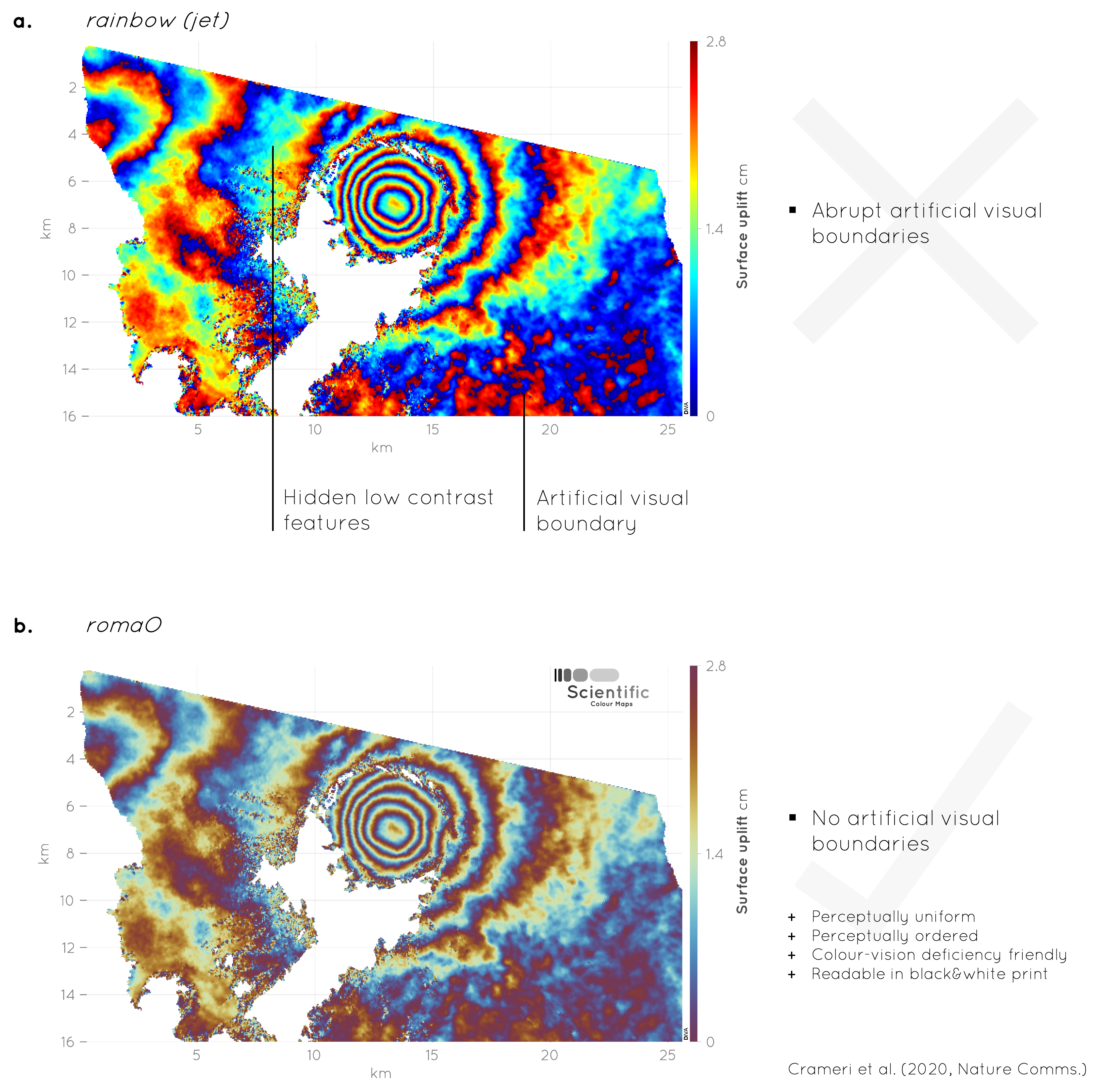

Scientific colour maps
Cyclic colour maps
Perceptually uniform ✔︎ Perceptually ordered ✔︎ Colour-vision-deficiency friendly ✔︎ Readable as black-and-white print ✔︎ Provided in all major formats ✔︎
Cyclic / Orbitual
No black
Use with circular data only!
Cyclic (or orbital) colour maps are colour gradients that have neither a beginning nor an end. They are useful to display periodic data sets like angular data or data from Synthetic Aperture Radar (SAR) interferometry, which is used to display Earth’s surface displacement (see below, for example). The cyclic Scientific colour maps, like romaO, are diverging colour maps with matching ends. Since this class has no beginning or end, it is very versatile and does not have to be carefully adjusted to the underlying data.
-
Designed for periodic data sets
romaO
Colour map diagnostics

